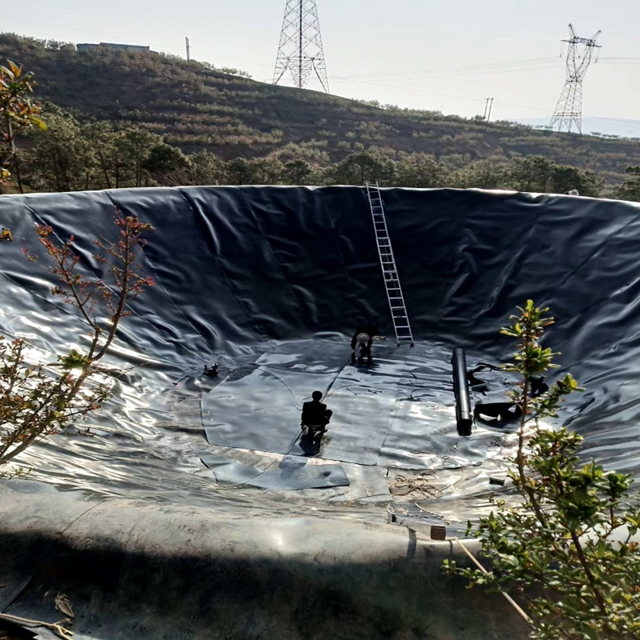1. Landfill Liners
One of the most common applications of geomembranes is in landfill liners. In landfills, large amounts of solid waste are deposited, which can generate leachate containing harmful substances. Geomembranes are used as a barrier to prevent the leachate from seeping into the surrounding soil and groundwater. They provide an effective seal, reducing the risk of soil and water pollution. High - density polyethylene (HDPE) geomembranes are often preferred for landfill liners because of their excellent chemical resistance, durability, and low permeability. A well - installed HDPE geomembrane can last for decades, ensuring the long - term integrity of the landfill containment system.
2. Reservoir and Pond Linings
In the water management sector, geomembranes are widely used for lining reservoirs and ponds. They help to retain water by minimizing seepage losses. In regions where water resources are scarce, this is of utmost importance. For example, in agricultural irrigation ponds, geomembranes can prevent water from seeping into the ground, thus ensuring that the stored water is available for crop irrigation. The smooth surface of geomembranes also reduces the growth of algae and other aquatic organisms, which can otherwise affect water quality. Additionally, the installation of geomembranes in reservoirs can be relatively quick compared to traditional lining methods, such as concrete lining, which saves time and cost.
3. Canal Lining
Canals are an important part of water transportation and irrigation systems. Geomembranes are used to line canals to improve water conveyance efficiency. By reducing seepage, more water can be delivered to the intended destinations. This not only saves water but also helps in maintaining the stability of the canal banks. In addition, geomembranes protect the canal from erosion caused by the flowing water. They can be installed on various types of canal substrates, including soil, gravel, and rock. The flexibility of geomembranes allows them to conform to the irregular shapes of canal cross - sections, providing a seamless and effective lining solution.
4. Wastewater Treatment Facilities
In wastewater treatment plants, geomembranes play a crucial role. They are used in the construction of lagoons, basins, and other treatment units. Geomembranes prevent the leakage of wastewater, which may contain high levels of pollutants, into the environment. They also help in separating different treatment processes within the facility. For example, in anaerobic digestion ponds, geomembranes are used to create a sealed environment that is essential for the proper functioning of the anaerobic bacteria. The chemical resistance of geomembranes enables them to withstand the harsh chemical conditions in wastewater treatment, ensuring the long - term operation of the treatment facilities.
5. Aquaculture Ponds
Geomembranes are increasingly being used in aquaculture ponds. They provide a clean and impermeable surface for fish and shrimp farming. The use of geomembranes in aquaculture ponds simplifies pond construction and maintenance. It is easier to control water quality as the smooth surface of the geomembrane reduces the accumulation of organic matter and sediment. Geomembranes also protect the pond from seepage, which is important for maintaining the correct water depth and salinity levels required for aquaculture species. Moreover, they can be customized in terms of size and shape to fit the specific requirements of different aquaculture operations.
6. Mining Industry
In the mining industry, geomembranes are used in tailings impoundments. Tailings, the waste materials left after the extraction of valuable minerals, can contain heavy metals and other contaminants. Geomembranes are installed as liners in tailings ponds to prevent the release of these contaminants into the environment. They act as a reliable barrier, protecting soil, water, and air from pollution. In addition, geomembranes can be used in the construction of heap leach pads, where they help in containing the leaching solutions and maximizing the recovery of valuable metals. The durability and chemical resistance of geomembranes make them suitable for the harsh conditions in mining operations.
In conclusion, geomembranes have become an indispensable part of modern engineering and environmental protection. Their wide range of applications, from landfills to aquaculture ponds, showcases their versatility and importance. As technology continues to advance, we can expect even more innovative uses of geomembranes in the future, further enhancing their contribution to sustainable development.
